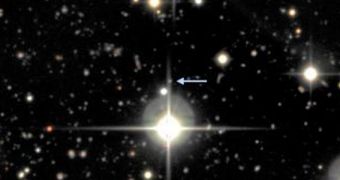University of California in Santa Barbara (UCSB) astronomers announce the discovery of two very powerful supernova events, which occurred when the Universe was less than 4 billion years old, at a distance of roughly 10 billion light-years from Earth. These objects may hint at a previously-unknown class of stellar explosions, called superluminous supernovae.
Data from the Supernova Legacy Survey (SNLS) revealed the existence of these bright objects in 2006 and 2007, respectively. Until now, astronomers puzzled over them, because they did not want to accept the idea that these explosions were so far away. This would have involved extreme energy and luminosity, which went against theory.
However, new data indicate that indeed these supernovae were located in the Cosmos' distant past. According to the conclusions of a new study published in the December 20 issue of the Astrophysical Journal, at least one of these blasts may have been caused by the creation of a magnetar.
Magnetars are a special type of neutron stars that feature massive magnetic fields, and which spin multiple times per second. They are one of two possible neutron star variations, the other one being a pulsar, e! Science News reports.

 14 DAY TRIAL //
14 DAY TRIAL //